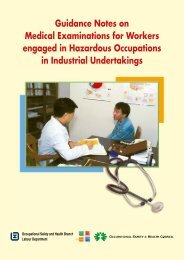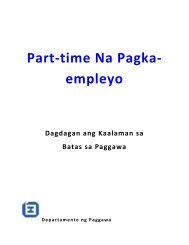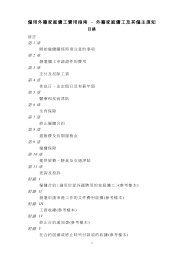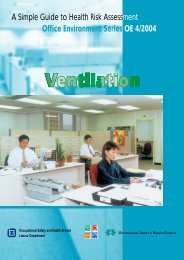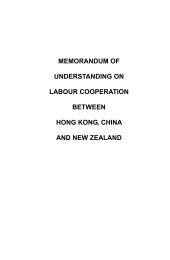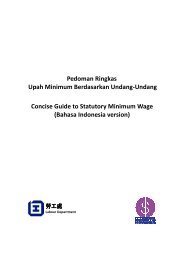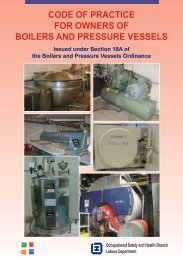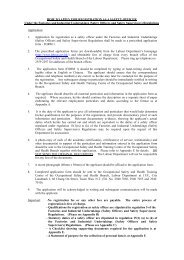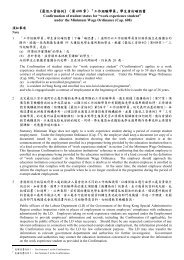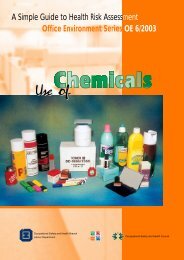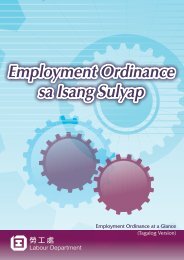Occupational Infection
Occupational Infection
Occupational Infection
You also want an ePaper? Increase the reach of your titles
YUMPU automatically turns print PDFs into web optimized ePapers that Google loves.
<strong>Occupational</strong> Disease Casebook -<strong>Occupational</strong> <strong>Infection</strong><br />
Introduction<br />
<strong>Occupational</strong> hazards can generally be divided into three main<br />
categories:<br />
Physical hazards<br />
: for example, high temperature, high barometric pressure,<br />
etc.<br />
Chemical hazards : for example, some heavy metals and their compounds,<br />
organic solvents, etc.<br />
Biological hazards : for example, bacteria, virus, fungus, etc.<br />
<strong>Occupational</strong> hazards vary from industry to industry. As far as biological hazards<br />
are concerned, industries at risk include health care services, agriculture and livestock<br />
keeping industries, slaughtering, transportation of livestock and manufacturing<br />
and processing of animal and plant products. Precautions should also be taken<br />
against these hazards for work involving frequent contact with and the handling of<br />
contaminants and waste, such as cleaning, drainage and repairs.<br />
Micro-organisms can enter the body through different routes like inhalation, contact<br />
with skin (especially damaged skin) or mucous membrane. If workers do not take<br />
appropriate precautions at work, they may get infected.<br />
The objective of this booklet is to illustrate, through case studies, the causes of<br />
occupational infections, and to advise on specific preventive measures.<br />
1



